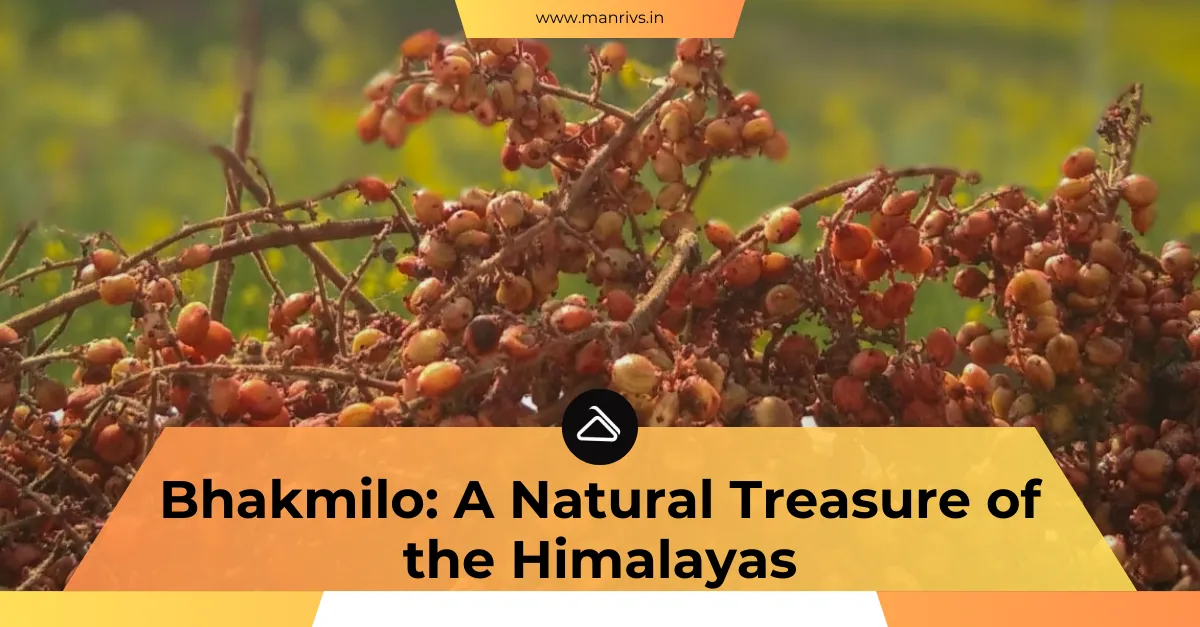The Himalayan region including Northeast India is home to an exotic plant called Bhakmilo (Rhus chinensis Mill., Anacardiaceae). This plant species thrives at altitudes ranging from 300 to 1800 meters and plays a vital role in the region’s ecology and culture. In this article, we will explore the many facets of Bhakmilo, from its botanical characteristics to its traditional and medicinal uses.
Botanical Characteristics
Bhakmilo, scientifically known as Rhus chinensis Mill., belongs to the Anacardiaceae family. It is a subtropical plant that exhibits remarkable adaptability, flourishing in various environments. This includes rocky and sandy slopes of hills, dry to moist forests, cultivated farms within agroforestry systems, and even forested areas. Its adaptability makes it a valuable asset for both nature and local communities.
Physical Characteristics
Stem: Bhakmilo has soft, semi-woody stems.
Leaf: The leaves are green, with some being simple, while others are compound.
Flower: The flowers are small and brown in color.
Fruits: The fruits are categorized as berries due to their cluster formation. Each fruit is relatively small, measuring around 1 cm.
Seed: Bhakmilo seeds are tiny, measuring only 0.08 cm in size.
Lifecycle of Bhakmilo
Bhakmilo is a deciduous tree and its lifecycle follows a distinct pattern. The first leaves start to appear during March to April. Flowering takes place between July and September. The tree bears fruit from October to December, completing its annual cycle.
Medicinal Value
For generations, Bhakmilo has been a trusted resource for folk medicine practitioners in the Himalayan region. Various parts of the plant, including the stem, root, bark, fruit, and especially the galls, are renowned for their preventative and therapeutic properties. These properties extend to addressing ailments such as diarrhea, dysentery, diabetes mellitus, sepsis, oral diseases, and inflammation.
The healing potential of Bhakmilo goes beyond folklore. Scientific research has confirmed its remarkable attributes like antiviral, antibacterial, anticancer, hepatoprotective, antidiarrheal and antioxidant.
One notable component of Bhakmilo galls is hydrolysable tannins, known as gallotannins. These compounds have been traditionally used in Chinese medicine to address a range of conditions, including coughs, diarrhea, night sweats and dysentery.
Harvesting and Processing
The fruits of Bhakmilor/Rhus are typically harvested from November until the first week of January. This labor-intensive process involves hand-picking or cutting branches, primarily from private agroforests or nearby forests. After harvesting, the fruits undergo a meticulous processing routine involving drying, cleaning, extraction, soaking, rubbing and boiling.
The final product, known as “chuk,” is a thick, dark-black Bhakmilo juice. It is stored in bottles or airtight containers and can be preserved for 4 to 5 years. This unique concoction is either consumed at home or sold in local markets. Even the residual fruit peel finds its purpose as it is used for making pickles or serves as veterinary medicine for livestock.
A Culinary Heritage
This plant holds a special place in the culinary traditions of the Himalayas. Indigenous communities especially Nepalese have embraced Bhakmilo-ko-amilo as a principal ingredient in crafting more than 15 distinct pickles, each with its unique flavors and cultural significance. This tradition not only reflects the rich biodiversity of the region but also showcases the depth of traditional ecological knowledge possessed by these communities.
Conclusion
In the heart of the Himalayas, it stands as a botanical marvel and a cultural treasure. Its versatile nature, medicinal properties, and culinary significance make it an integral part of the region’s identity. From its role in folk medicine to its contribution to traditional pickles, Bhakmilo embodies the delicate balance between nature and culture in this pristine Himalayan landscape.

